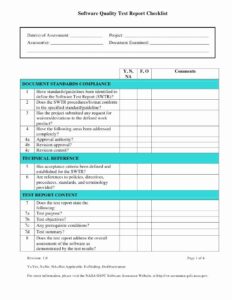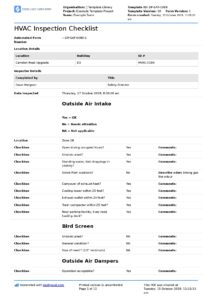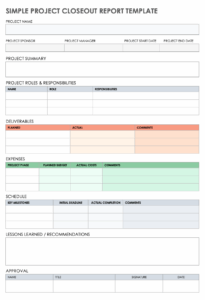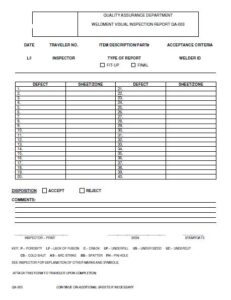You’ve worked tirelessly on a new software feature or an entire system, guiding it through development, rigorous unit testing, and meticulous integration checks. Now comes the moment of truth: User Acceptance Testing, or UAT. This is where your actual users get their hands on the product, confirming that it not only works as intended but also meets their real-world needs and expectations. It is the critical final step before your hard work goes live and starts making an impact.
However, simply conducting UAT isn’t enough. The insights, feedback, and crucial go-no-go decisions from this phase need to be captured, organized, and communicated effectively. This is where a comprehensive report comes into play, transforming raw data into actionable intelligence. Without a clear and structured way to document these findings, valuable information can be lost, leading to miscommunication, delays, or even the deployment of a product that doesn’t quite hit the mark.
That’s precisely why having a robust user acceptance test report template is an absolute game-changer. It provides a consistent framework for documenting everything, ensuring all key stakeholders are on the same page and that the project moves forward with confidence. Think of it as your project’s official stamp of approval, detailing exactly what was tested, what was found, and the ultimate decision regarding its readiness for launch.
Why a Solid UAT Report is Your Project’s Best Friend
A well-crafted UAT report is far more than just a formality; it is a foundational document that underpins the successful deployment of any software project. It serves as the definitive record of the user acceptance testing phase, providing transparency and accountability for all parties involved. This report captures whether the developed solution truly meets the business requirements and user expectations, acting as the final checkpoint before going live. It is the primary means by which user feedback, issues, and successful validations are formally communicated back to the development team, project managers, and executive stakeholders.
One of the most significant benefits of a detailed UAT report is its ability to mitigate risks. By clearly documenting any defects or deviations from the expected behavior, the project team can address these issues proactively before they become costly problems in a live environment. It helps prevent misunderstandings about what was delivered and what was accepted, offering a clear reference point if any questions arise post-launch. Furthermore, it provides a historical record that can be invaluable for future audits, compliance requirements, or when revisiting project decisions.
Moreover, a standardized report facilitates smoother communication across diverse teams. Developers gain clear, structured feedback on what needs to be fixed or improved, while project managers can easily track progress and make informed decisions about project timelines and resources. Business stakeholders, on the other hand, receive a concise summary of the product’s readiness, enabling them to confidently sign off on its deployment. It bridges the gap between technical execution and business needs.
The UAT report also plays a crucial role in managing expectations. It clearly outlines the scope of the testing, the conditions under which it was performed, and the outcomes. This helps avoid situations where users or stakeholders believe certain functionalities were tested or approved when they were not. It’s a document that everyone can refer back to for clarity on what was officially validated and accepted by the user community.
Ultimately, having a comprehensive UAT report means that when the time comes to launch, everyone involved can proceed with a shared understanding and a high degree of confidence that the product is fit for purpose. It ensures that the collective effort culminates in a solution that genuinely serves its intended audience, reflecting well on the entire project team and the organization.
Key Sections to Include in Your UAT Report
To truly be effective, your report needs to cover several essential areas. While the specifics might vary slightly depending on your project, these core components ensure completeness:
- Project Information: This includes the project name, ID, version being tested, and the dates of the UAT phase.
- Test Objectives and Scope: Clearly state what the UAT aimed to achieve and what functionalities were included or excluded from testing.
- Test Environment Details: Document the environment setup, including hardware, software, and data used for testing.
- Test Participants: List the individuals or user groups who performed the UAT.
- Test Scenarios and Cases: Outline the specific scenarios or test cases executed during UAT, referencing any external documentation.
- Defects and Issues Log: Detail any bugs, errors, or discrepancies found, including their severity, status, and responsible parties for resolution.
- Test Results Summary: Provide an overview of the testing outcomes, including pass/fail rates, critical issues, and overall system performance.
- Sign-off and Approval: Include sections for the formal acceptance or rejection by key business stakeholders and project management.
- Recommendations and Next Steps: Offer suggestions for improvements, further testing, or post-launch activities.
Streamlining Your UAT Process for Maximum Efficiency
While a great user acceptance test report template lays the groundwork for excellent documentation, the report itself is only as good as the UAT process that generates its content. To make your UAT phase truly efficient and impactful, there are several practices you can implement. Firstly, clear communication from the outset is paramount. Ensure that all UAT participants understand their roles, the testing objectives, and the criteria for success or failure long before testing begins. Providing clear, concise test scripts and expected results will significantly reduce confusion and streamline the execution phase.
Another critical step is to involve your end-users early and often, even before formal UAT begins. Their insights during requirements gathering and even during prototyping can prevent major issues from surfacing late in the game. When they feel invested in the development journey, they are more likely to provide constructive and thorough feedback during the actual UAT. Make sure they have adequate training on the system they are testing, as unfamiliarity can often be mistaken for defects, wasting valuable time.
Finally, embrace an iterative approach to UAT where possible. Instead of one massive UAT phase at the very end, consider breaking it down into smaller, more manageable cycles. This allows for quicker feedback loops, faster resolution of issues, and continuous improvement throughout the development lifecycle. Tools that facilitate real-time bug reporting and collaboration among testers and developers can dramatically cut down the time it takes to move from issue discovery to resolution.
- Define clear UAT entry and exit criteria.
- Provide comprehensive training to UAT participants.
- Utilize dedicated defect tracking tools.
- Schedule regular sync-up meetings for testers and developers.
- Ensure easy access to the UAT environment and support.
By adopting these practices, you can transform your UAT from a potential bottleneck into a highly effective and productive stage of your project.
Embracing a well-structured user acceptance test report template and implementing efficient UAT practices will undoubtedly elevate your project’s success rate. It moves beyond simply checking boxes to genuinely ensuring that the software you deliver not only functions flawlessly but also truly resonates with and serves its intended users. This level of meticulous documentation and user involvement builds confidence, minimizes post-launch surprises, and fosters a collaborative environment where every stakeholder feels heard and valued.
Ultimately, the effort invested in creating comprehensive UAT reports pays dividends by guaranteeing that the final product is robust, user-friendly, and perfectly aligned with business objectives. It’s an indispensable asset for any project aiming for excellence and successful adoption in the real world, ensuring that your hard work translates into tangible user satisfaction and business value.




